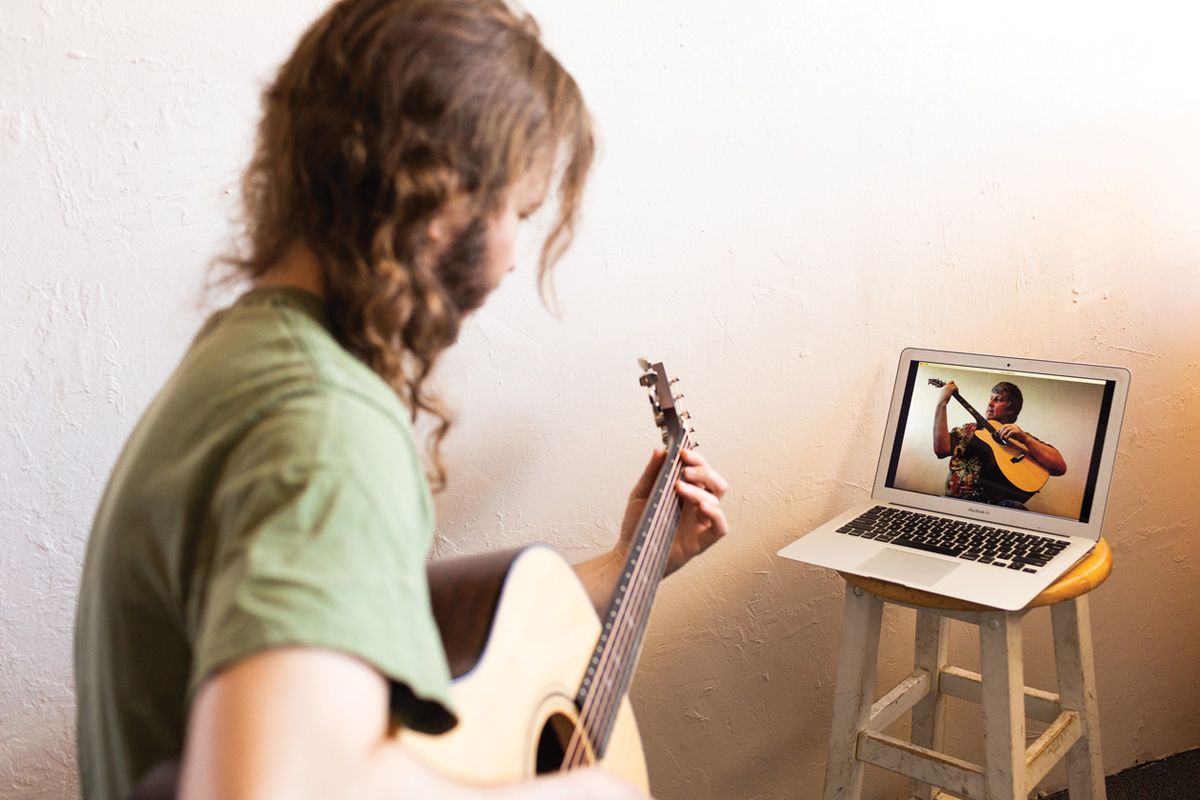
Meet the future of learning.
We should never ignore the terrible costs of the COVID-19 pandemic to people’s lives and livelihoods, but for this column, I’ll be looking at it as a crisis the way we look back at the mortgage crisis, which gripped the country a little over a decade ago. It’s true the cause of that crisis was completely different and that it played out much more slowly. Despite their dramatic differences, however, these two most recent shake-ups have proved to have a lot in common.
The obvious similarities are that both caused lots of unemployment, both had a negative impact on peoples’ net worth, and both saw the word “unprecedented” used an unprecedented number of times. But another similarity that doesn’t show up on news feeds is that both the mortgage crisis and the COVID-19 pandemic have resulted in a lot more people playing guitar, and playing music in general.
While the pandemic has had devastating consequences for performers of all kinds who rely on a live audience, its impact on those who play primarily for their own enjoyment has been mostly positive. As during the mortgage crisis, there has been a significant uptick in the number of people interested in learning to play guitar, as well as people learning to play a different instrument or a different style. Of course, part of the reason is that so many people are stuck at home during shelter-in-place orders, but we saw a similar increase in playing guitar at home—as opposed to just listening to guitar music—during the mortgage crisis. And the only restriction on mobility during the mortgage crisis was a person’s lack of funds.
What is it about playing music that makes it so much more compelling when we are under threat? Part of the appeal is that music is obviously comforting and familiar, but playing music also gives the player a much-needed sense of control, much like baking bread or starting an herb garden. A decade ago, we couldn’t get our job back or make our home worth as much as it had been in 2007, and this year, we can’t go to a long-awaited festival or even go to our favorite restaurant or bar. But when we open the guitar case, the only restrictions are from within. We are the ones who determine what songs we can’t play, or how well we play the ones we already know. And these are things only we can change. Taking charge of your tune list or how you play a solo may not seem like much, but when you are facing restrictions and diminishment every way you turn, adding new songs and licks to your musical bag of tricks gives the “music sets you free” cliché a potent new meaning.
Despite the difference in health danger between the financial crisis and this pandemic, the biggest change for your local music store is how people satisfy the urge to learn new songs and styles. A decade ago, increased demand for lessons gave many guitar instructors their first experience with a waiting list of potential students. At the music store where I work, students coming to take their lessons were about the only customers we saw walk through our door when banks were going under and the stock market was plummeting. (The exceptions were people wanting to sell the “extra” guitars they’d acquired during the good times.) But compared to the mortgage crisis, how we learn music is where this pandemic has forced us to take a very different path.
The game-changer of recent months is the explosion in virtual music lessons. And this change will last longer than finding a cure for COVID-19. In fact, it’s going to change how people learn a lot of things for a long time. It’s not that Zoom lessons or YouTube tutorials are the result of shelter-in-place orders: The technology for digital lessons has been widely used for years. But now that face-to-face guitar lessons are no longer an option, the question is if they’ll ever return. Will people sit shoulder to shoulder and clanging headstocks with other pickers in a stuffy room to take a workshop from their hero? Or … will they opt for a Zoom lesson?
One advantage—and I think it’s a huge one—is that when taking a virtual workshop, fellow students won’t know you are a relative beginner. This means beginners will take more advanced workshops, and advanced instructors will get even the most shy students. Everybody wins! Given the technology already available, won’t split screens for both teacher and student become common for private lessons? For a virtual lesson, you might be seated at your kitchen table and your instructor might be in his basement, but the virtual reality you both enjoy onscreen is that you’re seated across from one another in a spacious rehearsal studio. Will either instructor or student really want to return to a cramped lesson room in the back of a noisy music store? Only time will tell.

